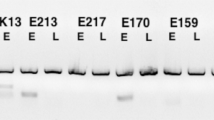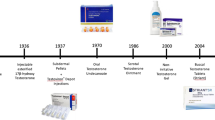Abstract
LIPSCHÜTZ and Iglesias1 showed that subserous fibroids scattered in the abdominal cavity (gastric, splenic, mesenteric, uterine, parametric and fibroids of the abdominal wall) can be induced in female guinea pigs to which œstrogens have been administered for a sufficient length of time. These fibroids infiltrate into surrounding tissues, especially smooth and striated muscle. All œstrogens, natural or artificial, free or esterified, have been found to be fibromatogenic. Localization of these abdominal fibroids follows a certain pattern independent of the œstrogen used2 (for summary, see ref. 3). In the course of our work we have also established that certain steroid hormones, when administered simultaneously with the fibromatogenic œstrogen, prevent formation of fibroids. Progesterone, desoxycorticosterone4, dehydrocorticosterone5 and testosterone4 were shown to be antifibromatogenic. Fibroids which have already been induced by œstrogenic action begin to regress when about three months later an antifibromatogenic steroid (progesterone) t is given and allowed to act simultaneously with the œstrogen6,7.
This is a preview of subscription content, access via your institution
Access options
Subscribe to this journal
Receive 51 print issues and online access
$199.00 per year
only $3.90 per issue
Buy this article
- Purchase on Springer Link
- Instant access to full article PDF
Prices may be subject to local taxes which are calculated during checkout
Similar content being viewed by others
References
Lipschütz, A., and Iglesias, R., C. R. Soc. Biol. (Paris), 129, 519 (1938).
Lipschütz, A., Iglesias, R., and Vargas, L., Proc. Soc. Exp. Biol. Med., 45, 788 (1940).
Lipschütz, A., Cold Spring Harbor Sympos., 10 (1942).
Lipschütz, A., Vargas, L., and Nuñez, C., Proc. Soc. Exp. Biol. Med., 48, 271 (1941).
Lipschütz, A., and Zañartu, J., Endocrin., 31, 192 (1942).
Lipschütz, A., and Maass, M., Cancer Res. (in the press).
Lipschütz., A., and Schwarz, J., Cancer Res. (in the press).
Lipschütz, A., Rev. Med. y Alim. (Chile), 5, 73 (1941).
Lipschütz, A., Vera, O., and González, S., Cancer Res., 2, 204 (1942).
Lipschütz, A., Rev. Canad. de Biol., 2, 92 (1943).
Unpublished work in collaboration with Drs. S. Bruzzone, F. Fuenzalida, R. Iglesias and others.
Author information
Authors and Affiliations
Rights and permissions
About this article
Cite this article
LIPSCHÜTZ, A. Chemical Structure and Anti-Fibromatogenic Activity of Steroid Hormones. Nature 153, 260–261 (1944). https://doi.org/10.1038/153260a0
Issue Date:
DOI: https://doi.org/10.1038/153260a0
This article is cited by
Comments
By submitting a comment you agree to abide by our Terms and Community Guidelines. If you find something abusive or that does not comply with our terms or guidelines please flag it as inappropriate.



